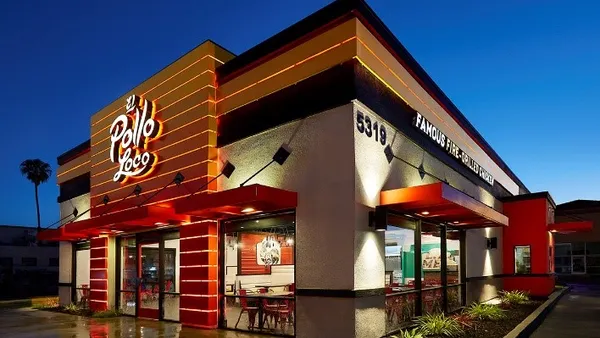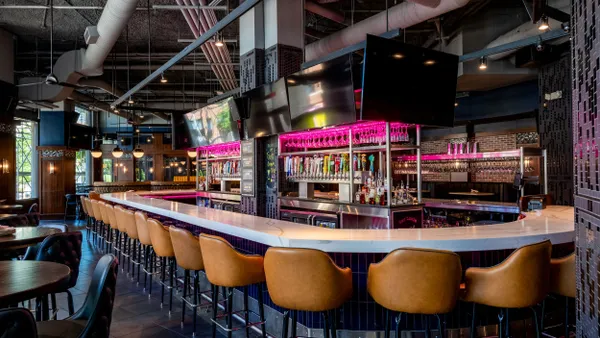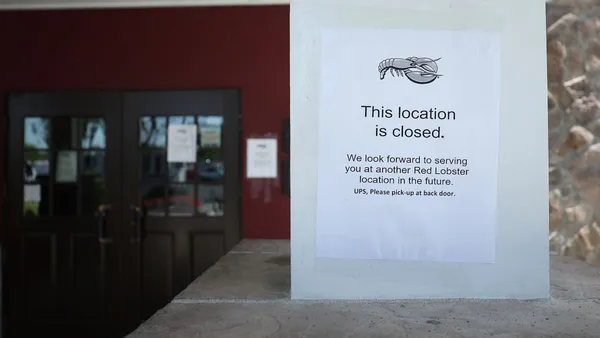When full-service breakfast, brunch and lunch concept First Watch went on an investor roadshow prior to its Friday stock listing, many potential backers were surprised by its long-term performance, CEO Chris Tomasso said. Before the pandemic, First Watch reported 28 consecutive quarters of same-restaurant sales growth from fiscal 2013 to 2019, according to the company's S-1 filing.
These results were nearly unheard of leading into the COVID-19 crisis. Many full-service chains were experiencing stagnant, mediocre same-store sales growth and even declines due to consumer shifts toward off-premise ordering. The rise of fast casual chains and concepts that offered unique food and experiences also hurt full-service restaurant performance.
During COVID-19, the company's same-restaurant sales decreased 29% in 2020 compared to 2019, but by March 2021, it started to report positive same-restaurant sales growth over 2019 levels, according to its S-1 filing. As of August 2021, First Watch's same-restaurant sales were up 17% over 2019 and 45% over August 2020, according to its S-1 filing. First Watch quickly pivoted to off-premise, partnered with Olo to develop a user interface and expanded its delivery partnerships with DoorDash and Uber Eats to recover these lost sales.
"Our recovery from COVID has been phenomenal and beyond our expectations," Tomasso said. “We've been comping positive over 2019 since Q2 [2021] and we haven’t looked back. … So the timing just felt right for us to [go public]."
First Watch's public debut appears to reflect continued investor interest. After its IPO went live starting at $18 per share, stock prices quickly rose above $20 and the company ended its first day of trading at over $22 per share. With its IPO of 9,459,000 shares of common stock, the company will raise over $170 million. First Watch also granted underwriters a 30-day option to purchase up 1,418,850 shares at the IPO price, which would raise another $25.5 million.
The brunch restaurant's IPO represented the first time a full-service restaurant company has gone public since revolving sushi chain Kura Sushi in 2019, which raised $41 million during its IPO.
Preparing to grow to 2,200 restaurants
First Watch will use the proceeds of its IPO to pay down debt that it had traditionally used to fund its growth, Tomasso said. Reducing that debt will allow the restaurant to spend more on expansion, he said.
And First Watch has big plans. The chain, which has over 420 units, wants to expand to 2,200 domestic restaurants in the future. That growth will come via traditional locations, Tomasso said.
"We have a high-class problem of more demand than we can serve on many of the days that we're open right now. So we believe if we just keep doing more of what we're doing and bring our unique breakfast, brunch and lunch offering to more people, that that growth will continue," he said.
The company has only reached about 20% of its unit goal, and will focus on opening restaurants in new markets, building out its emerging markets and then infilling restaurants in some of its core markets, Tomasso said.
First Watch also expects to develop more menu innovation, since that has fueled sales success in the past. In 2015, for example, it launched its fresh juice program. During that time, the program made up about 4% of its customer sales mix, but now it is sitting at over 14%, Tomasso said. While First Watch is in the early stages of rolling out its alcohol program — it's in about two-thirds of its restaurants — Tomasso said to expect more innovations and extensions in that area.
"We've been around for almost four decades. We feel like we're just getting started," Tomasso said. "We just get excited when we start thinking about the next two, five, 10 years, and really where this company and this brand can go."














